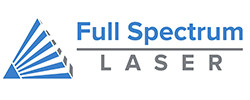Anodized aluminum is a highly regarded material due to its durability, versatility, and aesthetic appeal. Other people choose aluminum over other metals due to its high corrosion and impact resistance. Many people strive to perform beautiful engraving on aluminum, however high-quality engravings are often difficult to make. In this article we will explore methods one can use to engrave anodized aluminum with ease.
Pre-cleaning:
We recommend cleaning the surface of the anodized aluminum before performing an engraving. This is to remove any dirt, dust, and oils that may be present to ensure nothing is there to get in the way of the engraving process.
Intended Design
By knowing the design you wish to use and the depth of the engraving you can adjust the material accordingly. Shallow engravings are suitable for decorative purposes, while a deeper aluminum is ideal for creating tactile effects. You will also need to keep in mind the resolution of the image. If you're working on a medium to large engraving, then the design you're using should have a high resolution, as low resolution images will start to look pixelated when expanded.
Laser Parameters
The laser parameters used will vary depending on the laser engraver and the anodized aluminum used. It is recommended that the engraving settings are used on a small area or practice piece to obtain the optimal parameters.
While we can’t give you specific specific parameters for your machine we can give starting parameters that ensure your material will be engraved. For your starting engraving we recommend having the following settings: Power- 50%, Speed- 1500, Frequency- 70, and have your hatching set to a single direction. In order to help with fine tuning your setting we will explain what changing the parameters will do to your material
Power & Speed
Power and Speed are inversely proportional to each other. For example, dark engravings achieved by increasing the power can also be replicated by decreasing the speed. The decreased speed will also make the engraving deeper than if the power was increased instead. Therefore we recommend adjusting the power and speed to make the engraving the shading you desire (dark or light) and then performing another pass to achieve the desired depth.
Passes
In order to increase the depth of an engraving the power and speed can be adjusted, however there is a chance that the material can be damaged or the engraving will look far different from the desired finish. In that case it is advisable to instead perform multiple passes to increase the depth. By performing multiple passes you’ll be able to get the engraving you want with little to no material damage.
Post-Cleaning:
After engraving the anodized aluminum, it is important to clean the newly engraved surface. Remove any protective surface added before the engraving if applicable.
While engraving anodized aluminum can be a challenging task at first, with a proper understanding of how your laser settings work you can adjust them to better suit your material and design. By following these guidelines, you can create high quality engraving that are both durable and aesthetically pleasing.

